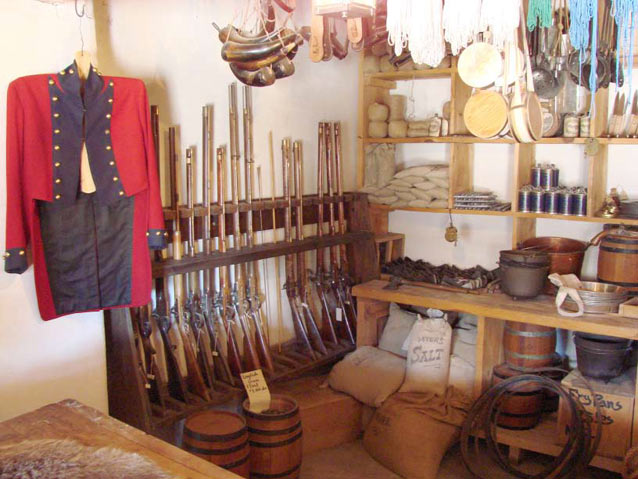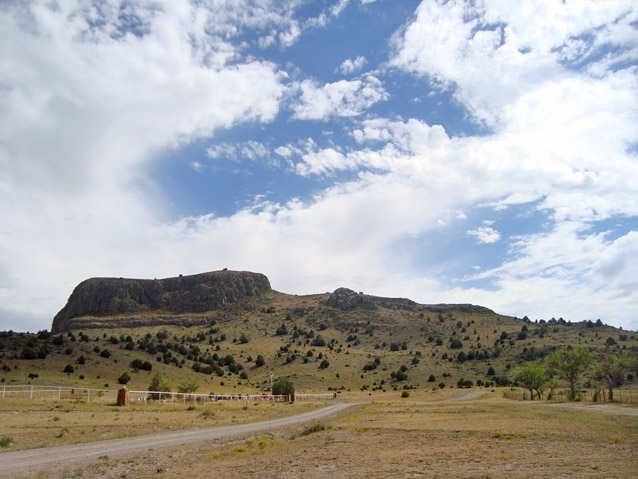More Trail Facts
- Independence, Missouri was also a “jumping off point” for the Oregon and California Trails (SFTA 2009).
- Early on, the most popular commodity traded in Santa Fe was cotton cloth; woolen and silk goods and other assorted items (e.g., playing cards) were also in demand (Gardner 1993). In exchange, traders received silver pesos, mules, and beaver pelts.

© David Zettner
- In addition to the national park units, there are many significant historic sites along the Trail in either public or private ownership (USDOI 1976). These include:
- Pawnee Rock in Kansas — a well-known landmark and Native American lookout and ambush point along the trail;
- Point of Rocks in Kansas — a landmark (large rock outcropping) for travelers on the Cimarron Cutoff, now within the Cimarron National Grasslands;
- Raton Pass in New Mexico — the location of Wooten’s toll road, established in 1866;
- Wagon Mound in northeastern New Mexico — the last well-known landmark crossing the plains; and
- Santa Fe Plaza — built in 1610, the Plaza was the entry port of the Santa Fe Trail and the northern end of the Chihuahua Trail from Mexico.

NPS
Decline of the Santa Fe Trail
The decline of the Santa Fe Trail started in 1863 with the westward expansion of the Kansas Pacific Railroad from Wyandotte, Kansas (USDOI 1976). Four years later the Trail was abandoned east of Fort Larned. Not long after, the railroad bypassed the Cimarron Cutoff, and the wagon traffic that remained followed the Mountain Branch. By 1873, the railroad reached the vicinity of Bent’s Fort. More than 60 years of life on the Santa Fe Trail ended when the first steam engine reached Santa Fe in February of 1880.
Part of a series of articles titled The Santa Fe Trail.
Last updated: March 18, 2016
